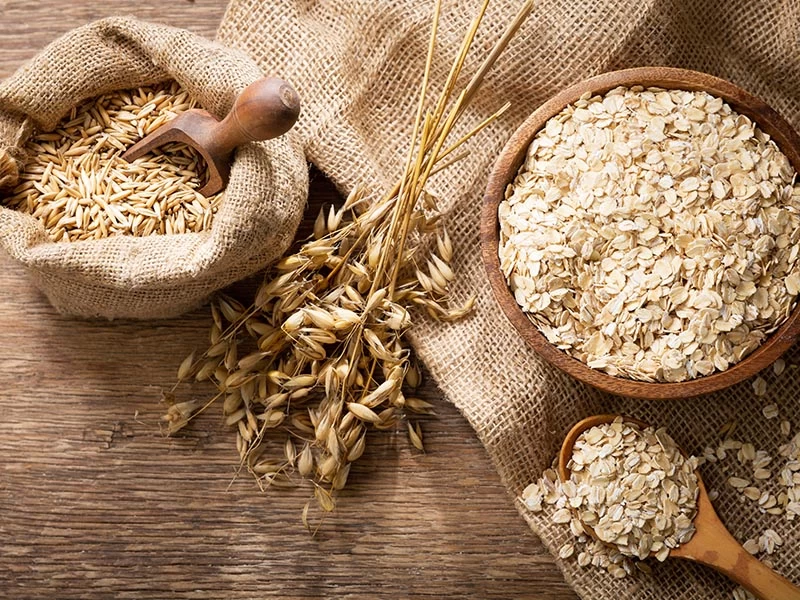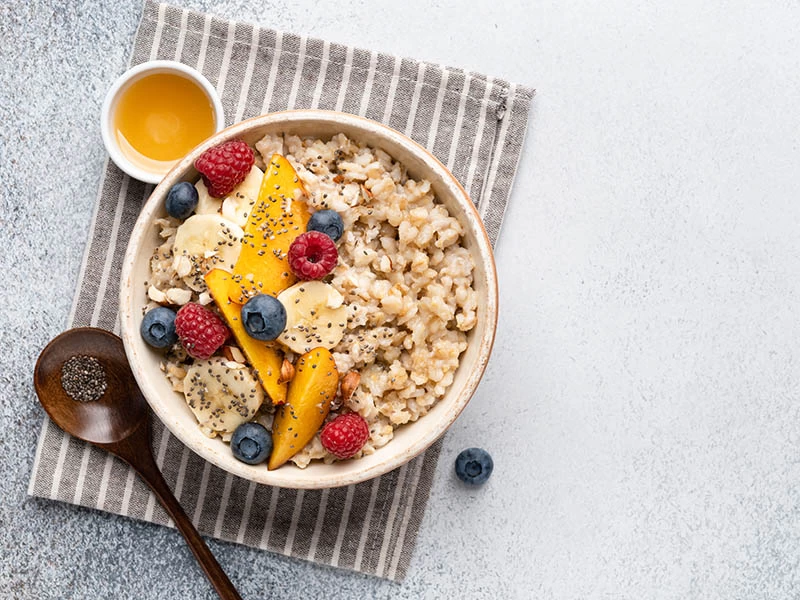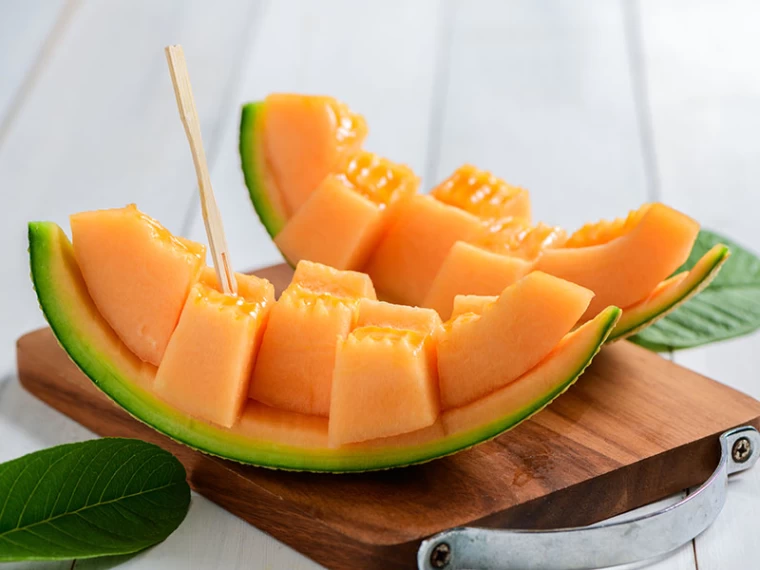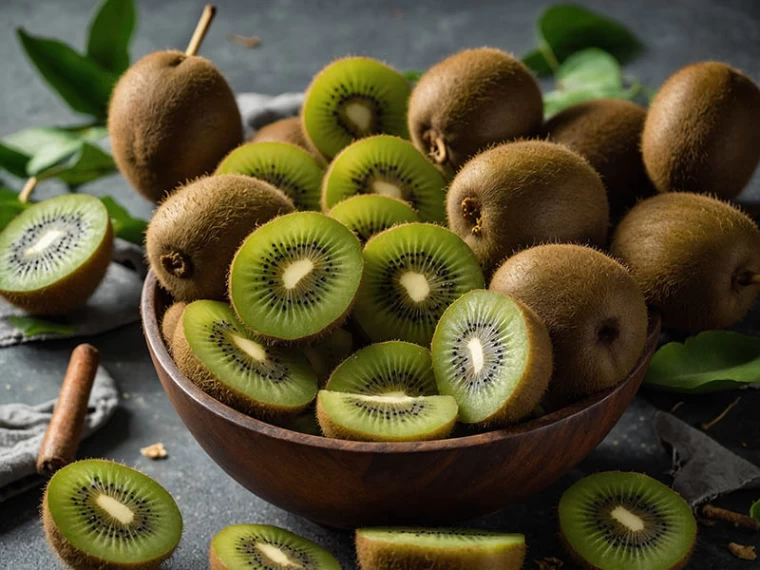
Differences between Barley and Oats
In this article, we will discuss the main differences between barley and oats. These two popular grains are used in various diets and each has unique characteristics. Join us as we explore more details about these two foods.
Comparison of Nutritional Composition and Value of Barley and Oats
Below, we will comprehensively compare the nutritional value of barley and oats.
Protein and Fiber in Barley and Oats
Both barley and oats contain significant amounts of protein and fiber, but oats have more soluble fiber, which helps improve digestive function and reduce cholesterol. On the other hand, barley, due to its high insoluble fiber content, helps improve bowel function and reduce constipation. These differences reflect the specific nutritional needs of everyone, and the right choice can have a significant impact on overall health.
Vitamins and Minerals in Barley and Oats
Oats generally contain higher amounts of vitamin B1 and magnesium, which play important roles in energy production and nervous system health. Barley, on the other hand, contains more iron and selenium, which are vital for blood health and the immune system. This difference in mineral content helps everyone choose appropriately based on their specific bodily needs. Consuming both grains in the diet can adequately meet various nutritional needs.
Uses of Barley and Oats in Cooking and Diets
Barley and oats have different uses in cooking and diets, which we will mention.

Use in Foods
Barley, due to its firmer structure, is more commonly used in traditional dishes and soups. On the other hand, oats are usually used in flaked form or oat flour in making cakes, bread, and bulgur. The choice between these two usually depends on the type of food and the time available for preparation. Additionally, oats are more popular in quick meals due to their faster digestion.
Place in Special Diets
Oats, due to their blood sugar-lowering properties, are more commonly used in diabetic diets. Conversely, barley, due to its satiating properties, is a suitable option for weight loss diets. These characteristics make both grains valuable options for different population groups, from athletes to people with chronic diseases. Combining these two grains can provide a more balanced diet.
Differences between Flaked Barley and Flaked Oats

One of the most frequently asked questions is the difference between flaked barley and flaked oats, which we will fully address in this article from the healthy lifestyle section of Sunich.
What is Flaked Barley?
Flaked barley is processed from barley grains to reduce cooking time and ease of consumption, produced in thin flakes. Flaked barley is often used in soups, stews, and hot dishes. This product, due to its soft texture and mild flavor, is a suitable option for those looking for a healthy alternative to rice or wheat. Additionally, flaked barley contains nutrients beneficial for cardiovascular health. Using flaked barley in preparing hot breakfasts like haleem is also common.
What is Flaked Oats?
Flaked oats are similar to flaked barley but made from oats. This product is usually used in preparing breakfast, granola, and healthy snacks. Flaked oats, due to their easy digestion and low glycemic index, are very popular in weight loss and diabetic diets. Additionally, flaked oats quickly soften in water or milk and are ready to eat. This feature makes it an ideal option for quick and nutritious breakfasts. On the other hand, flaked oats can also be used in preparing healthy desserts.
Differences between Flaked Barley and Flaked Oats
Flaked barley requires more cooking time compared to flaked oats and has a slightly firmer texture. On the other hand, flaked oats have a sweeter taste and softer texture, making them ideal for quick meals and snacks. These differences help cooks choose the right grain based on their specific dietary and time needs. Combining the two can create a suitable balance between taste and nutritional value.
Health Benefits of Barley and Oats
Reducing the Risk of Heart Disease
The soluble fiber in oats helps reduce bad cholesterol and lowers the risk of heart disease. While barley, due to its strong antioxidants, can be beneficial in preventing heart disease. Both grains are effective in reducing inflammation and improving heart health and can be included alternately in the diet. Regular consumption of these grains as part of a balanced diet can support long-term health.
Blood Sugar Control
Oats have a low glycemic index and therefore help control blood sugar. Barley can also be effective in reducing blood sugar, but its effect is less than oats. The choice between these two depends on the specific needs of everyone, such as managing or preventing diabetes. Adding these grains to daily meals can help stabilize energy levels and reduce the risk of blood sugar fluctuations.
Differences in Production and Preparation Processes of Barley and Oats
Processing and Preparation
Barley is usually less processed and available in whole or crushed grain form. Oats, however, are often flaked or ground to be ready for consumption. These processing differences make each of these grains find a specific place in different food groups and cooking. Using various processing methods provides a wide range of products for consumers.
Cooking Time
The cooking time for barley is usually longer than for oats. Flaked oats only need a few minutes to cook, while barley may require hours of cooking. This time difference can be decisive for those looking for quick meals. Additionally, the choice between these two grains can be based on preparation time and everyone time needs.
Suitable Choice for Different Needs
For Athletes
Athletes looking for a quick energy source can use oats as they are quickly digested and absorbed. However, barley, due to the more stable energy it provides, is more suitable for long-term activities. Both grains are recommended as a natural source of complex carbohydrates in athletes' dietary plans. Combining these two grains can also provide a suitable balance of quick and stable energy.
For Children and the Elderly
Oats, due to their softer texture and easier digestion, are more suitable for children and the elderly. Barley may be a bit harder to digest for those with digestive issues. Adding these grains to the diet of the elderly and children can increase energy levels and provide the necessary nutrients. Preparing meals with a combination of these grains enhances flavor and nutritional value.
How to Identify the Difference between Barley and Oats
Physical Appearance
Barley usually appears as elongated and firmer grains that range in color from yellow to brown. In contrast, oats are usually available in flat and soft flakes or smaller grains that are white to cream in color. These physical differences help consumers easily distinguish between the two grains. These features make choosing these grains in stores simpler.
Texture and Taste
Barley has a firmer texture and a mild, nutty flavor, while oats have a softer texture and a sweeter taste. This difference in texture and taste makes each of these grains have different applications in cooking. The choice between these two depends on the type of food you are preparing and your taste preferences. Knowing these differences can enhance your cooking experience.
Variety of Species and Subspecies of Barley and Oats
Barley Species
Barley includes species such as pearl barley, hulled barley, and two-row barley. Each of these species is used in different foods such as soups, bread, and stews. The variety of barley species allows consumers to choose a suitable option based on their needs. This variety also allows for the use of barley in new and creative dishes.
Oat Species
Oats are also available in forms such as steel-cut oats, flaked oats, and instant oats, which are used for various purposes such as breakfast or quick cooking. These species allow everyone to choose the best option based on the time and type of food they have in mind. Using different species of oats can provide a variety of healthy and nutritious foods.
Comparison of Price and Availability of Barley and Oats
Barley Price
Barley generally has a lower price and is easily accessible in local markets. This feature has made barley an economical option for everyday use in foods. The low price of barley can make it a suitable option for families.
Oat Price
Oats, due to the additional processes they undergo, may be more expensive, especially in flaked or gluten-free forms. However, their high nutritional value justifies this cost. The choice between these two can be based on budget and nutritional needs.
History and Traditional Uses
Barley in Cultures
Barley is one of the oldest grains cultivated by humans and has been used in traditional foods such as barley soup and barley bread. This grain has been used as a main source of nutrition in many cultures. The historical role of barley in various societies indicates its importance in the human diet.
Oats in History
Oats have also been known as a nutritious food in Northern Europe and cold regions and have often been used in the form of bulgur or flakes in breakfast foods. This grain, due to its resistance to harsh climatic conditions, has been very popular in these regions. The use of oats in the modern diet continues to increase.
Storage Methods for Barley and Oats
Storage Conditions for Barley
Barley should be stored in a dry and cool environment to prevent spoilage. Using airtight containers can increase its shelf life. Proper storage methods can maintain the quality of barley in the long term.
Storage Conditions for Oats
Oats, due to more processing, have a shorter shelf life and should be stored in airtight containers and in the refrigerator. These methods help maintain their quality and nutritional value. Following storage tips ensures that oats remain usable for a longer period.
Summary
Ultimately, the choice between barley and oats depends on personal needs and preferences. Both grains have numerous properties and can contribute to overall body health. It is recommended to include both in your diet to benefit from the advantages of each.
Frequently Asked Questions
- Does oats contain gluten?
No, oats are naturally gluten-free; however, they may become contaminated with gluten during processing. Therefore, gluten-sensitive people are advised to use gluten-free oats.
- Which is better for weight loss?
Both can aid in weight loss, but oats might be more effective due to their stronger satiety properties.
- Can barley and oats be substituted for each other?
In some recipes, they can be substituted, but due to differences in texture and flavor, it's best to stick to the original recipe.














